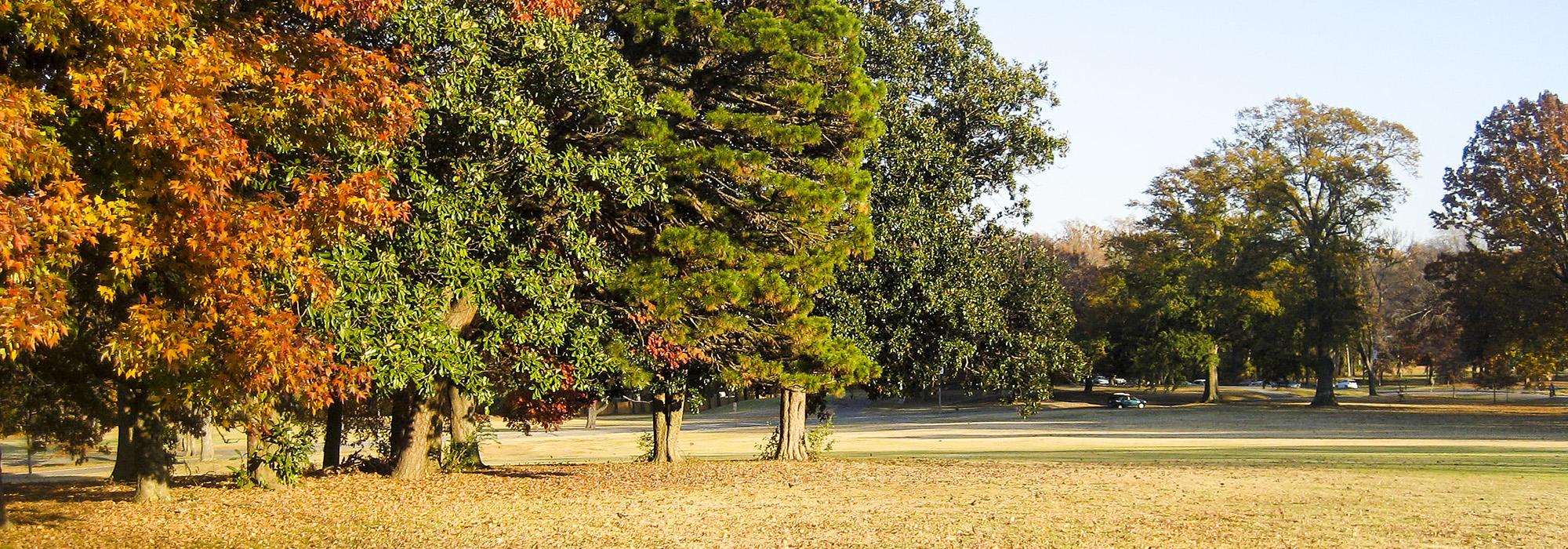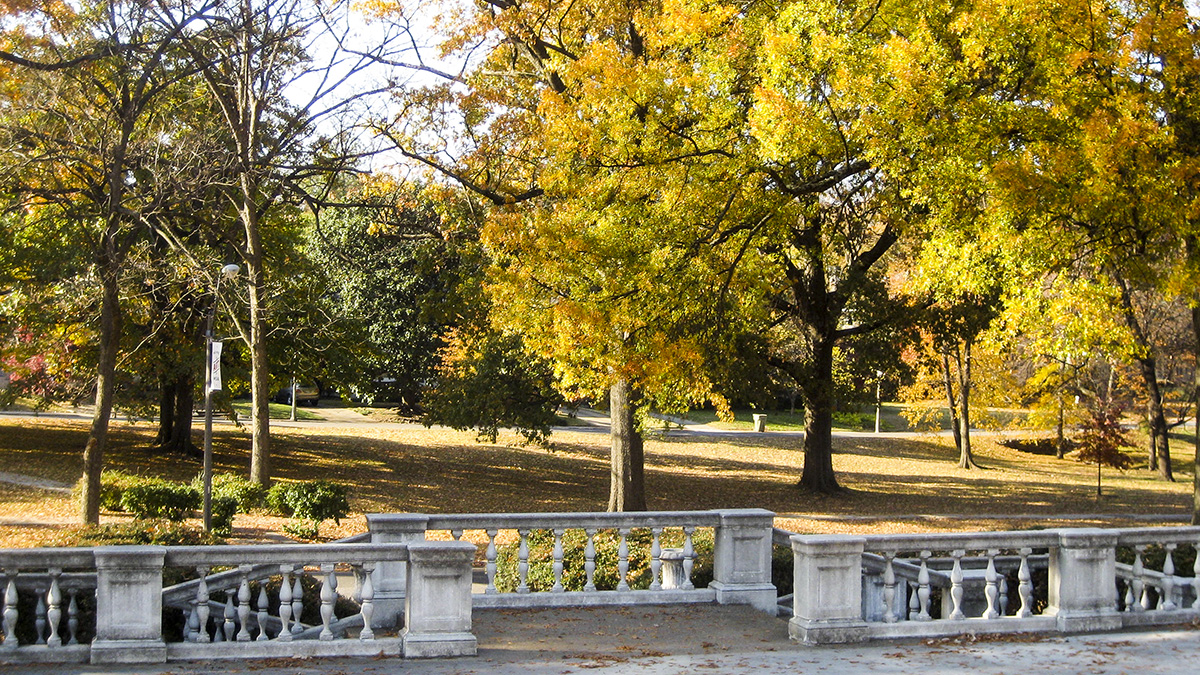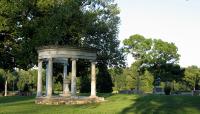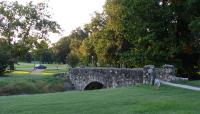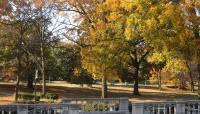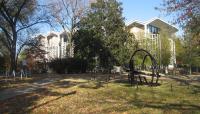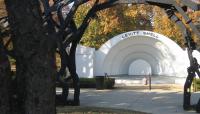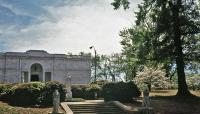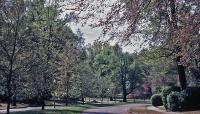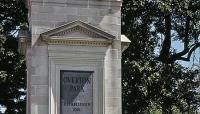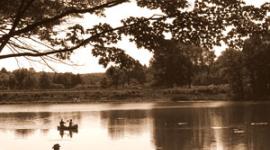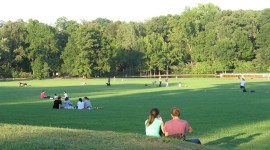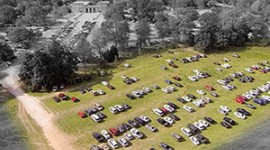Landscape Information
At the beginning of the 20th century, the Memphis Park Commission acquired 342 acres on the eastern edge of the city and hired landscape architect George Kessler to design a public park. Kessler’s 1901 plan connected Overton and Riverside parks via three parkways, implementing the beginnings of an integrated municipal park system. Overton Park (named for John Overton, one of Memphis’ founding founders) was designed in a Picturesque manner with carefully placed plantings, ponds with rustic bridges, and curvilinear carriage drives and bridle paths. A 21-acre greensward was centered in the park, fronting a 175-acre old-growth forest of oaks, hickory, sassafras, sweetgum, hop hornbean, red maple, flowering dogwood, and pawpaw trees along with abundant native shrubs and groundcovers. Pavilions and memorials dotted the landscape, and Beaux Arts-style formal gardens, including a pergola, walks, benches, and flower beds of colorful perennials shaded by crepe myrtles and large evergreens, were added to the western boundary in 1904 and 1905. The city’s first public, nine-hole golf course, first playground, and the Memphis Zoo were also part of the park’s early plans.
The park’s presence stimulated residential growth on its eastern fringes, which was further encouraged by the inclusion of athletic, recreational, and cultural facilities such as the Memphis Brooks Museum of Art designed by James Gamble Rogers in 1916, the Overton Park Shell built by the Works Progress Administration in 1936, and the Memphis College of Art completed in 1959. Overton Park was listed in the National Register of Historic Places in 1979.



